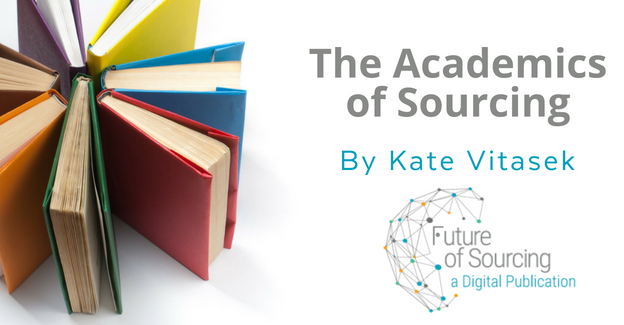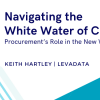This month Academics of Outsourcing highlight goes to professors Jeffrey H. Dyer and Harbir Singh for their influential work on the topic on what they call the “relational view,” of working in highly strategic alliances.
Dyer (the Horace Pratt Beesley Professor of Global Strategy at the Marriott School at Brigham Young University) and Singh (the Edward H. Bowman Professor of Management at the University of Pennsylvania’s Wharton School in Philadelphia) explored their concept in an academically dense – but very insightful – paper in 1998 “The Relational View: Cooperative Strategy and Sources of Interorganizational Competitive Advantage.” I’ve decided to “unpack” their thinking and pay tribute to their sound academic work in this month’s blog.
First – let’s define “relational view.” Simply put, it is when the sum of a relationship’s parts create something much greater and more valuable than what individual businesses can achieve on their own.
Relational view, while not particularly new in academic circles, is a concept whose time has definitely arrived for the business world, as companies strive to find ways to form lasting collaborative modern relationships that create and expand value, something that I call the “what’s-in-it-for-we” (WIIFWe) mantra of Vested partnerships.
I believe relational view and WIIFWe go hand in hand. In fact I think the work of Dyer and Singer provides a firm academic foundation for the collaborative concepts of the Vested methodology and business model.
In their paper, Dyer and Singh said that a firm’s “critical resources may extend beyond firm boundaries.” Those resources may be “embedded” in interfirm resources and routines and go a long way to explaining superior performance—and how profits are earned and preserved. They argued that “an increasingly important unit of analysis for understanding competitive advantage is the relationship between firms,” and they identified four sources that provide competitive advantages when organizations work together:
- Relation-specific assets
- Knowledge-sharing routines
- Complementary resources/capabilities
- Effective governance.
Looking at each point briefly, Dyer and Singh wrote: “The greater the alliance partners’ investment is in relation-specific assets, the greater the potential will be for relational rents.” They define “relational rents” as profits that are jointly generated in an exchange relationship that cannot be generated by either firm in isolation “and can only be created through the joint idiosyncratic contributions of specific alliance partners.”
Hey, I said this was an academic paper! In my view, Dyer and Singh described what in Vested parlance is known as achieving mutually agreed upon desired outcomes. They also said the greater the volume of exchange is between partners, the greater the potential will be to generate profits for the relationship through relation-specific assets.
With respect to the second point, Dyer and Singh explained that the greater the investment by the partners in knowledge-sharing routines, along with alignment of incentives that encourage transparency and reciprocity, the greater the potential for profits.
And on the third point, complementary resources/capabilities, they said that when the partners increase the proportion of their “synergy-sensitive resources” they increase the unique value of those resources, and thus the potential for profits.
Finally, when partners solidify and expand their ability to align transactions with governance frameworks—while minimizing transaction costs and maximizing value—they also increase the potential for the relationship’s profits.
My bottom line on Dyer and Singh? They describe some very basic tenets about collaboration, creating and expanding value that are inherent in successful Vested win-win relationships.
While densely written – the message is also clear: “a firm’s market value will be determined by the quality of its partners or will be influenced by economic events that influence its partners.” In other words, find the right partnership alignment, but also keep in mind that “business happens!”
There is no question in my mind that a business’s critical resources do extend beyond the walls of its executive suite. In fact in our current economic and business climate I believe combining critical resources across business platforms is a necessity.
When you come right down to it, isn’t that what collaborative outsourcing is all about?






